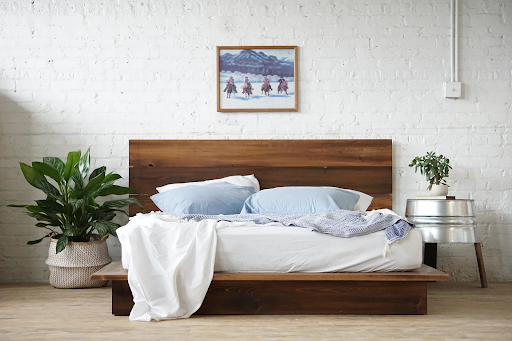The bedroom is the sanctuary of rest, and the choice of bed plays a pivotal role in creating the perfect ambiance. In recent years, the modern bedroom has witnessed a revolution with the rise of modern platform bed. These sleek and stylish alternatives to traditional beds have transformed how we think about bedroom design and comfort. This article will explore the differences between the platform and traditional beds, shedding light on the modern bedroom revolution.
Platform Beds: A Minimalist Marvel
Platform beds are known for their minimalist design and low profile. They typically consist of a simple frame with a solid platform that supports the mattress. Here are some key characteristics and advantages of platform beds:
Sleek Aesthetics:
Platform beds are celebrated for their clean lines and contemporary look. The absence of a bulky box spring gives them a streamlined appearance that complements modern and minimalist bedroom decor.
Space-Saving Design:
Platform beds often feature built-in storage options, such as drawers or shelves, beneath the mattress platform. This makes them an excellent choice for bedrooms with limited space, as they maximize storage without the need for additional furniture.
No Box Spring Required:
Unlike traditional beds, platform beds don’t require a box spring. The mattress sits directly on the platform, providing stable support. This design choice also reduces the overall height of the bed, making it easier to get in and out of, especially for shorter individuals.
Comfort and Support:
Platform beds provide even support for the mattress, which can enhance the longevity of the mattress and improve overall comfort. Some platform beds feature slats or a solid base, both of which offer excellent support for various mattress types.
Traditional Beds: Timeless Comfort
Traditional beds have been the standard choice for bedrooms for generations. They typically consist of a frame, a box spring, and a mattress. Here are some key characteristics and advantages of traditional beds:
Classic Elegance:
Traditional beds exude timeless elegance and can be found in a variety of styles, including sleigh beds, four-poster beds, and canopy beds. They often feature intricate headboards and footboards that serve as statement pieces in the bedroom.
Elevated Height:
Traditional beds tend to be taller than platform beds due to the addition of a box spring. This height can be beneficial for those who prefer the feeling of sleeping at a greater elevation.
Plentiful Mattress Options:
Traditional beds are compatible with a wide range of mattresses, including innerspring, memory foam, and hybrid options. This flexibility allows for personalized comfort.
Easy Maintenance:
Traditional beds with a box spring are relatively easy to clean and maintain. The box spring can also help with air circulation, which can be advantageous for certain mattresses.
Choosing the Right Bed for Your Bedroom:
When it comes to choosing between a platform bed and a traditional bed, it ultimately boils down to personal preference and the aesthetic you want to achieve in your bedroom. Consider the following factors when making your decision:
Bedroom Style:
Consider the existing decor and style of your bedroom. Platform beds are ideal for modern and minimalist spaces, while traditional beds can complement classic or vintage decor.
Space Constraints:
If you have limited space, a modern platform bed with storage can help maximize your bedroom’s functionality. Traditional beds may be a better fit for larger rooms.
Height Preference:
Think about your comfort preferences in terms of bed height. Platform beds are lower to the ground, while traditional beds with box springs tend to be higher.
In Conclusion: A Bed for Every Bedroom
The choice between a platform bed and a traditional bed hinges on your personal style, space constraints, and comfort preferences. Both options have their unique advantages, and the modern bedroom revolution welcomes diversity and choice. To enhance the comfort of your chosen bed further, consider adding a soft mattress topper for an extra layer of plushness and support.
